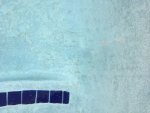I'm at the end of my rope.
I have these "brownish" (slightly red... but really brown/black) streaks in my pool. Mostly in the shallower area and also on the radius where the wall meets the floor.
I have maintained a consistent 30PPM... they don't go away. I have used different algaecides (I know, TFT hates them)... I have tried everything. I tried the "eraser" (rubberized attachment for my pool pole) and that has little, but not a great effect. I tried placing a "puck" on top of a stain - nothing. I tried the vitamin-C - nothing.
The pool is normally kept spot-on at 4PPM, with proper PH, etc...
What's the deal? Any other tricks? CYA is at 35PPM... everything else is as it should be. I've brushed while maintaining a long-term 30PPM...
The pool is maintained with a Stenner, and acid is added weekly to spec.
I have these "brownish" (slightly red... but really brown/black) streaks in my pool. Mostly in the shallower area and also on the radius where the wall meets the floor.
I have maintained a consistent 30PPM... they don't go away. I have used different algaecides (I know, TFT hates them)... I have tried everything. I tried the "eraser" (rubberized attachment for my pool pole) and that has little, but not a great effect. I tried placing a "puck" on top of a stain - nothing. I tried the vitamin-C - nothing.
The pool is normally kept spot-on at 4PPM, with proper PH, etc...
What's the deal? Any other tricks? CYA is at 35PPM... everything else is as it should be. I've brushed while maintaining a long-term 30PPM...
The pool is maintained with a Stenner, and acid is added weekly to spec.



 After reading this thread, I am intrigued by what I see and some of the history details such as:
After reading this thread, I am intrigued by what I see and some of the history details such as: